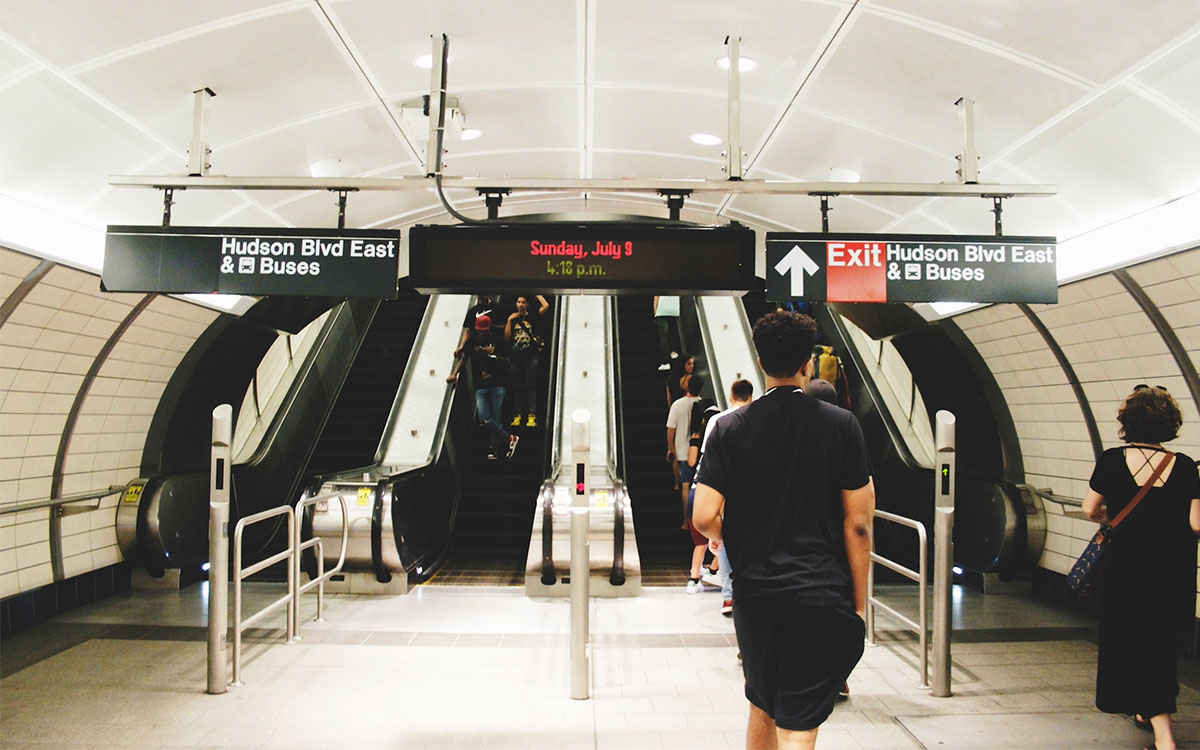A recent op-ed in Bloomberg Businessweek’s “Sunday Strategist” reintroduced an issue that’s found it way into headlines a few times over the last few years. Namely, should commuters pass each other on escalators? Many cities across the globe — including London and Tokyo — follow the exact method you find here at home: if you’re standing on the escalator, stay to the right and let walkers pass on the left. But according to researchers, that process creates an inefficient logjam that slows down commuters as a whole.
I for one, am an escalator walker. Here’s why:
- Standing immobile on a slow, ultimately unnecessary machine gives me anxiety.
- Walking is a cheap, effective way to get blood pumping to the brain, which boosts early morning concentration.
- New York commuters are are a special form of psychotic. I’m not trying to spend a single extra second with any of them if I don’t have to.
There’s also the fact that Michael Bloomberg himself — namesake of the publication of record here — once said, “I don’t have anything in common with people who stand on escalators. I always walk around them — why waste time? You have eternity to rest when you die.”
Like Mike, I’ve never even considered not walking up an escalator. Turns out our choice could be costing the masses, though. Transportation officials in London performed a couple experiments over the last couple years and figured out that A) the average walking time (on escalators at the city’s Green Park station) was 26 seconds, while the average standing time was only 40 seconds and B) only 40% of London commuters attempted “hiking” the escalator at the city’s Holborn Station.
That latter number held true at stations across city stations where escalators stretched 60 feet or higher. The 60% or more commuters unwilling to attempt inclines of that ilk are then forced to stretch in a single line on the right side. This doesn’t just make the ride longer: it creates congestion in the station, leads to angry tweets directed at “incompetent” transit authorities, and has fewer people riding metros and subways across the globe, which is an actual issue in the moment, especially in America.
London did attempt a period of side-by-side static escalator riding, finding inspiration from Hong Kong’s system, and people weren’t too pleased. American authorities would probably be met with similar resistance if they attempted to implement such a policy. But as new subways are built — at exorbitant costs, and deeper in the ground — this issue, trivial though it may seem, will surely come up again. I’m no city planner, but I am a commuter.
Guess it’s time I just started taking the stairs.
Subscribe here for our free daily newsletter.
Thanks for reading InsideHook. Sign up for our daily newsletter and be in the know.


















